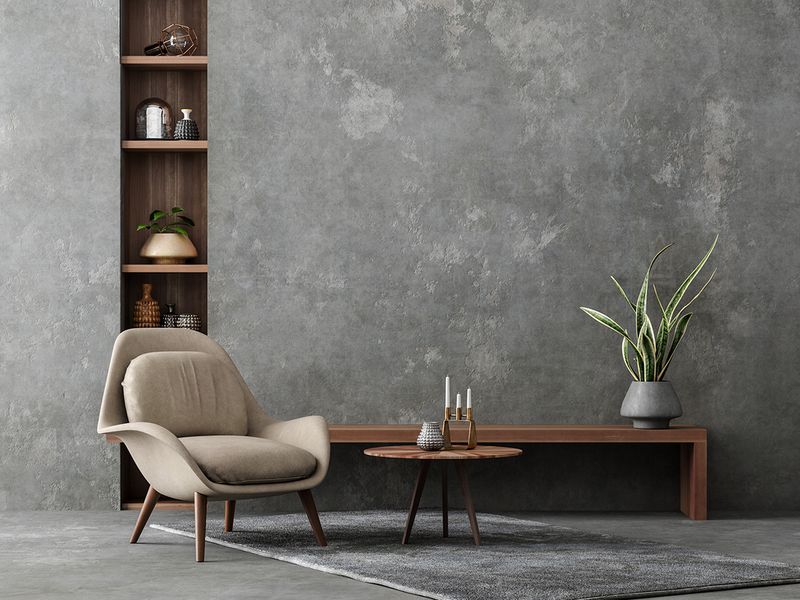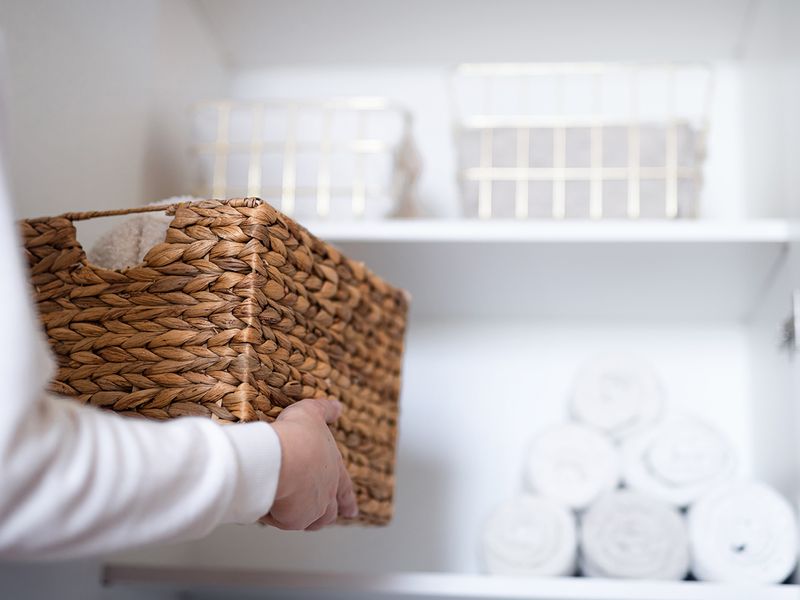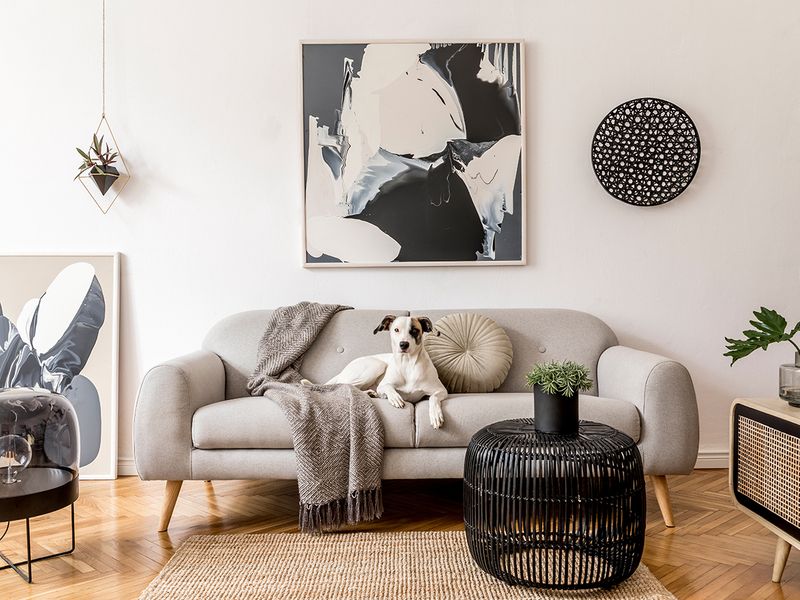
When I was growing up, I thought mess meant cosiness and comfort. My father, to be sure, thought the opposite. He would stare, aghast, at my desk, which was filled with curios of all sorts, ranging from two ragged stuffed toys, a few figurines and several photo frames, with a painting of a brightly coloured owl hanging over the table. The messy desk fit right into the messy room, which had posters plastered on the door, ranging from Bollywood stars to a torn Titanic poster that somehow didn’t leave our door for years.
“Clutter is the sign of a cluttered mind. You can’t work here,” my father would say in despair.
My room was a stark contrast to the rest of the house, which had been carefully organised and planned by my parents. Our living room wasn’t without colour, but neither was it jarring or excessively vibrant like our room. There was never any ornamental showpieces on tabletops; everything was neatly arranged in glass cupboards. Twenty years later, it’s the same aesthetic in a different home.
I, on the other hand, am living in a home that appears to be bursting at the seams. Apart from a small dog house in the living room, the dog’s scratch mats, you’ll be greeted by a dining table filled with scraps of paper, a kitchen counter that has an array of different disinfectants and a wall with photos and paintings.
So, how can I bring that feeling of peace and comfort into my home?
That’s where house hushing comes in. "Our lives are already rather quick-paced and what used to be a stereotypical way of living no longer applies," explains Pooja Patel, Founder, Artisanry Furniture Studio, Dubai. "People now seek more in their lives and the desire for personal fulfilment is higher than ever before. A balance between a hectic lifestyle and personal care needs to be maintained by focusing on our mental well-being," says Patel. When you walk into a minimal and comfortable space, completely curated by yourself, you’re greeted by a wave of calm and a sense of belonging. "It is a much-needed oasis where we can slow down, refresh and restart," she says.
What is house hushing?

House hushing is about quietening everything that seems to be visually making noise in the house. It’s all about what takes up emotional, physical and visual space. You need to scan your home and see what seems excessive, loud, and inharmonious, affecting your peace of mind. "It's not merely about minimising noise. It's a holistic approach that weaves together psychological well-being, spatial efficiency, privacy and aesthetic appeal," says Vrushali Mhatre, Assistant Professor at the School of Textiles and Design at Heriot-Watt University, Dubai. It's about simplifying the living space, to allow colours, forms and materials to take centre-stage, especially those that evoke feelings of comfort, adds Mhatre.
There are several layers to house hushing, which include decluttering, organising and planning, explains Dubai-based interior designer Mehreen Baldoni, who has her own company Mehreen Baldoni Interiors. “One method is to go around the house, declutter and create storage. In the second, look at the visual aspects of designing,” she says. “People often say that they want a house where they feel that they’re leaving their worries behind them,” says Baldoni. There are several ideas surrounding designing a home, including the Feng-Shui and Vaastu practices continues Baldoni.
Feng shui and Vaastu
With regard to Feng shui, the house is expected to ‘flow’ with good energy, and is designed accordingly. You need to create space within rooms, so there’s a free flow of space. Feng shui in your home is meant to encourage the life you wish to have, rather than just fixing your house, according to the American health portal, EverydayHealth.com.
Feng shui (meaning wind and water) is an ancient Chinese traditional practice which claims to use energy forces to harmonise individuals with their surrounding environment .
For example, see whether furniture pieces are blocking pathways, swap dark drapes with light, so that daylight can enter the rooms. This idea believes that the elements of wood, earth, water, metal and fire can be incorporated into designing houses. These elements affect how you feel in this space. Another example is the setting of mirrors. As mirrors equal water, it is not advisable to keep it above your head, as you want ‘to keep your head above water’. The mirror placement is important in Feng Shui, as placing it wrongly means you get up late in the morning.
The ‘Vaastu’ method, an ancient Indian system of architecture, decides the layout of the house, including in which direction the furniture is facing. It is believed that certain layouts and structures induce positive energy. “For example, I’ve worked with people who prefer a swimming pool in front of the house, instead of the back, owing to the ‘vaastu’,” says Baldoni.
All these methods can work together in the case of house hushing. “The end result should be peace and tranquility,” says Baldoni, who believes in the principle of less is more.
‘Less is more’
Start rearranging your home by decluttering.
“Hushing your space doesn’t mean getting rid of everything but keeping the things you need, want and love in aesthetically-pleasing storage units and functional furniture pieces," says Shelina Jokhiya, Dubai-based professional organiser. When you have less clutter, your home will be cleaner and more organised, she adds. Moreover, decluttering reduces stress and induces peace in people, as they feel more in charge of their lives. The chaos recedes.

Hushing your space doesn’t mean getting rid of everything, but keeping the things you need, want and love in aesthetically-pleasing storage units and functional furniture pieces...
To calm the noise, start with a mini declutter, by spending 15-20 minutes decluttering a small area, such as a shelf, table or cupboard, she says. "Declutter what you don’t need or want, assigning items to throw away, recycle, donate, or swap piles, and move anything in the wrong place to the right place, and then you can organise what you want to keep and store it in that section of your house," says Jokhiya.
Remember to declutter with a purpose. Think of why you are doing this. Then make a list of items that you want to sell as you go through each room. See what you would like to sell or donate. “When you are decluttering, ask yourself if you love it, does it make me happy, do I use it regularly, does it have sentimental value, and are there duplicates?” She says.
You have to be choosy about what you need, and what you can do away with, says Baldoni. If you’re keeping some of the clutter, there’s also a way to go about it.
Arranging clutter with an aesthetic sense

You don’t always have to stuff the clutter into storage rooms, garage or sell them. If you really want to keep stuff, you can think a little out of the box. Be practical, but creative. In short, design your home with care.
Baldoni suggests the usage of shelves, which also creates space in the room. You can arrange those shelves with items, rather than letting them gather dust outside. There’s a particular way in which you organise these shelves too, so that your home gets a look of elegance and is aesthetically pleasing. “There are many options for shelves, including floating shelves or raised shelves. You can use storage pouffes in the room, or storage benches, which you can fill neatly with books and ornaments. “In the corner of your room, you can get a beautiful wicker basket for storage. Get yourself snacking jars that can be kept beside your bed,” she adds.

There are many options for shelves, including floating shelves or raised shelves. You can use storage pouffes in the room, or storage benches, which you can fill neatly with books and ornaments. In the corner of your room, you can get a wicker basket...
Multi-functional furniture can be a game changer, says Amisha Aiya, a Dubai-based interior designer and stylist. People tend to get frustrated when they don’t have enough space for all their furniture and possessions. So, you can opt for pieces like bookcases with fold-down tables, or you can look for shelves with a fold-out table. This type of furniture gives you a lot of space for your books and other knick knacks. There’s no dearth of options, you can get comfortable with convertible sleeper chairs, side tables to handle all your cabled wires so that they don’t lie loose, or ottomans with built-in trays. Moreover, you can employ the use of sound-absorbing elements like acoustic panels and insulation, so that unwanted disturbances are minimised, says Mhatre. "By using sound-absorbing materials and thoughtful design elements, you also add an artistic dimension to the interiors," she says.
Aiya also explains the use of colours for your home saying,"Colour theory is a very essential part of designing and as walls constitute majority part of your space, you should opt for neutral tones or white. This can help make the room feel more calm and airy," she says.

Colour theory is a very essential part of designing and as walls constitute majority part of your space, you should opt for neutral tones or white..
Minimalism doesn’t mean an empty house

A decluttered house doesn’t mean a soulless house.
It’s important to remember that decluttering and going minimal doesn’t mean that your home loses a sense of cosiness and warmth, something that most people worry about. “Cosiness comes from things that are important to people, like personal items,” says Baldoni. Cosiness is also found in certain textures, like using cotton covers for a sofa. You can make a home cosy with the right designs, textures and layout; you don’t need to fill it with cluttered photo frames and posters to emphasise warmth.

You can employ the use of sound-absorbing elements like acoustic panels and insulation, so that unwanted disturbances are minimised. Sound-absorbing materials and thoughtful design elements also adds an artistic dimension to the interiors...
Baldoni also corrects the common misconception that minimalism means an empty house, bereft of any form of personalisation. “It is about creating an environment, a space for yourself that isn’t cluttered. A home can be full, yet minimal, just with the right colour palettes, textures and the usage of space,” she says. A person can have red and orange walls in a room, with just a coffee table and a chair, and it still won’t be minimalistic.
(Note: This article was first published on August 24, 2023)









